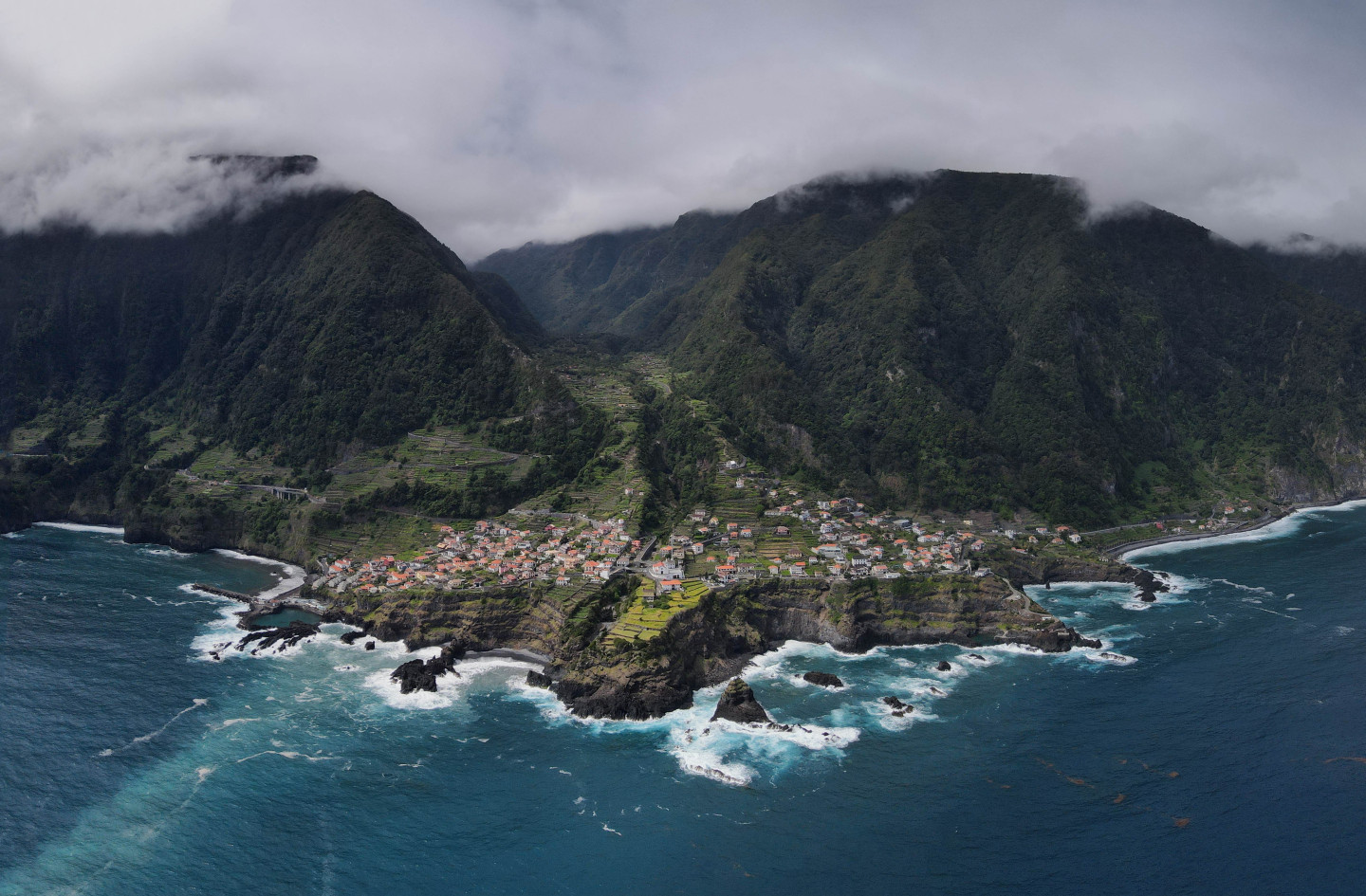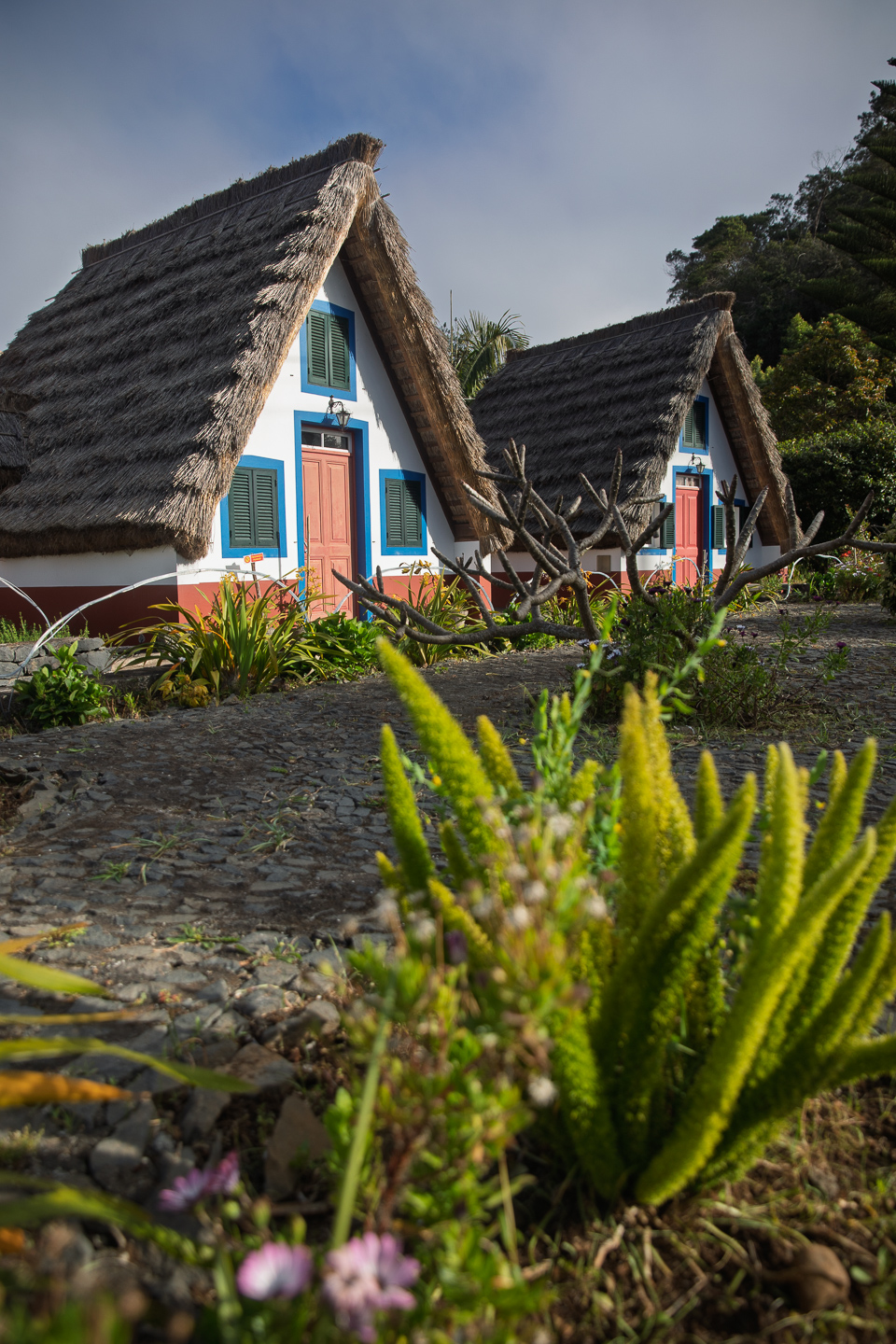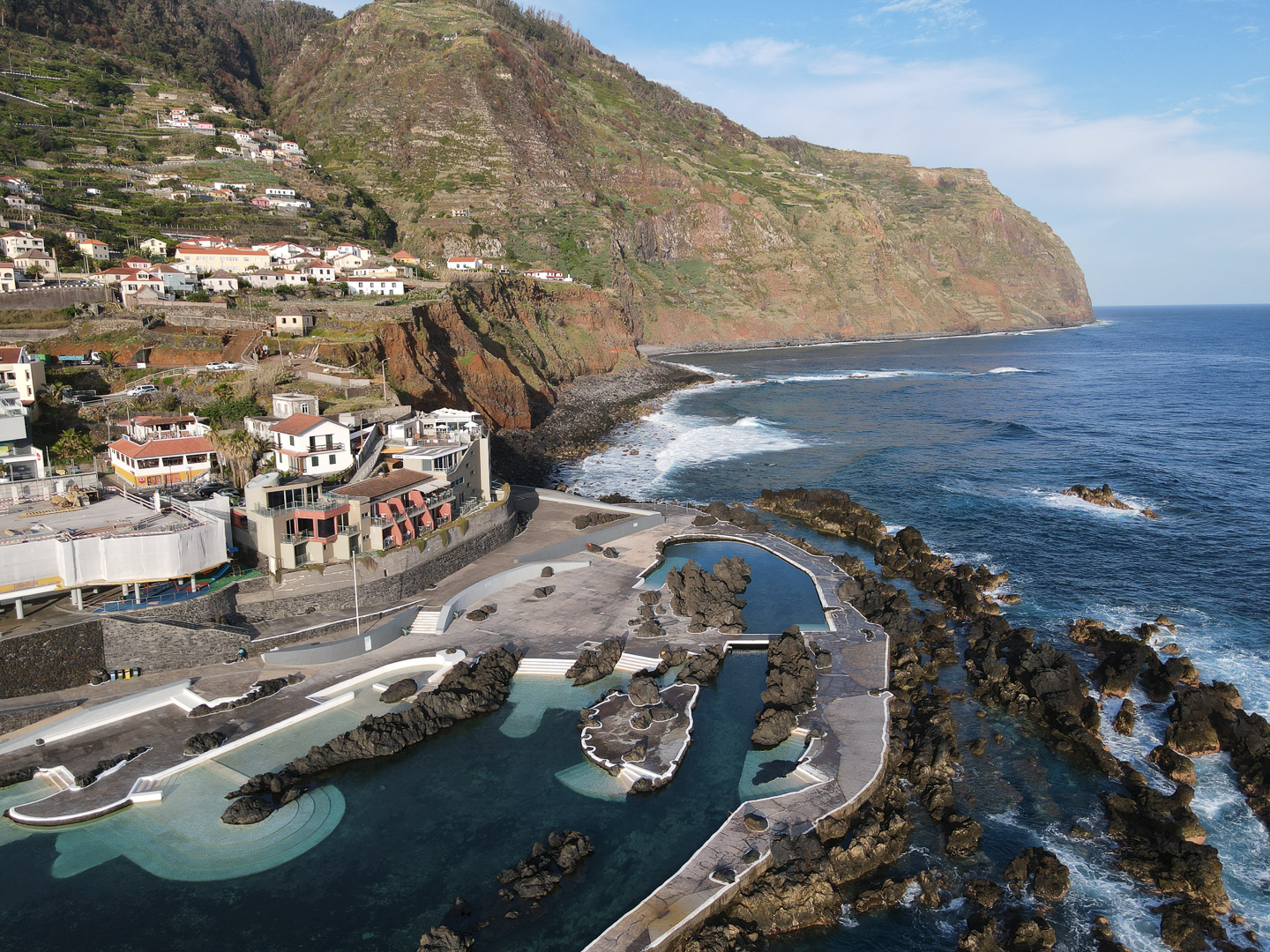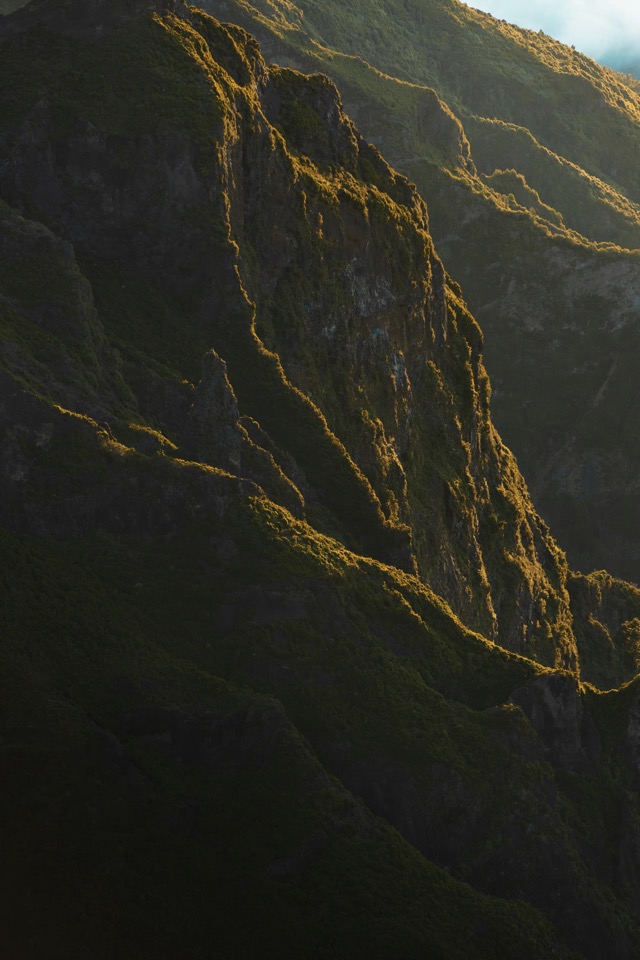Madeira
Nestled in the Atlantic, Madeira is Portugal’s lush island paradise, where emerald peaks meet dramatic cliffs and turquoise waters. Famous for its year-round spring-like climate, world-class hiking trails, and vibrant floral landscapes, this volcanic gem offers a blend of adventure and relaxation. Sip legendary Madeira wine, explore levada walks, or unwind in natural lava pools—this is an island of endless enchantment.
Essentials
- Best Months to Visit: April, August, December, February, January, July, June, March, May, November, October, September
zone Facts
- Geographical Location: Archipelago in the North Atlantic Ocean, southwest of Portugal and northwest of Africa.
- Main City/Town: Funchal (also the capital of the Autonomous Region of Madeira).
- Approximate Area: 801 km² (309 sq miles) for the entire archipelago.
- Key Geographical Features: Rugged mountains (e.g., Pico Ruivo), Laurisilva forest (UNESCO World Heritage Site), volcanic coastline, and dramatic cliffs like Cabo Girão.
- Dominant Climate Type: Subtropical Mediterranean, with mild winters and warm summers.
- Population: Approximately 250,000 (for the entire Autonomous Region of Madeira).
- Main Economic Activities: Tourism, wine production (e.g., Madeira wine), banana cultivation, and handicrafts.
- Common Languages/Dialects Spoken: Portuguese (official), with a distinct Madeiran accent.
- Best Time to Visit: April to October for warm weather and outdoor activities; spring (March-May) for blooming flowers.
- Unique Selling Points:
- Stunning landscapes, including levada walks (irrigation trails) through lush forests.
- Year-round festivals, such as the vibrant Flower Festival and New Year's Eve fireworks (one of the world's largest).
Tours and Day Trips
Levada Walks: Rabaçal & 25 Fontes
Immerse yourself in the heart of Madeira's UNESCO World Heritage Laurissilva forest on a guided Levada walk. The Rabaçal valley offers several popular routes, including the enchanting path to the 25 Fontes (25 Springs) waterfall and the impressive Risco waterfall. These walks follow ancient irrigation channels, winding through lush, endemic vegetation. Typically a half-day to full-day excursion, suitable for moderately active nature lovers and hikers keen to experience the island's unique ecosystem.
West Island Wonders: Porto Moniz & Cabo Girão
Discover the dramatic landscapes of Madeira's western coast on a full-day tour. Highlights often include the stunning natural volcanic lava pools at Porto Moniz, where you can take a refreshing dip, and the breathtaking views from Cabo Girão, one of Europe's highest sea cliffs with its suspended glass skywalk. You'll also likely visit charming fishing villages like Câmara de Lobos, a favourite painting spot of Winston Churchill. Ideal for sightseers, families, and photography enthusiasts.
East Island Charm: Santana & Pico do Arieiro
Explore the rugged beauty and cultural heritage of eastern Madeira. This full-day trip typically takes you to the iconic A-frame thatched houses of Santana, offering a glimpse into traditional island life. Weather permitting, you'll ascend to Pico do Arieiro, Madeira's third-highest peak, for spectacular panoramic views, often above the clouds. Visits to the Ribeiro Frio trout farm and its surrounding forest park are also common. Perfect for culture enthusiasts, mountain lovers, and those seeking dramatic scenery.
Dolphin & Whale Watching Expedition
Set sail from Funchal's marina into the azure waters of the Atlantic for an unforgettable marine adventure. Madeira is a year-round destination for spotting dolphins and whales, with several resident and migratory species. Catamaran or speedboat tours, usually lasting 2-3 hours, offer expert guidance and a chance to see these magnificent creatures in their natural habitat. Many operators are committed to responsible tourism. A fantastic experience for families, wildlife enthusiasts, and anyone looking to connect with the ocean.
Funchal's Heights: Monte & Toboggan Ride
Experience a classic Madeiran adventure by taking the cable car from Funchal up to the picturesque parish of Monte. Here, you can visit the stunning Monte Palace Tropical Garden or the historic Church of Our Lady of Monte. The highlight for many is the exhilarating descent back towards Funchal in a traditional wicker toboggan (Carro de Cesto), steered by two 'carreiros'. This unique experience can be enjoyed in half a day and is great fun for families and those seeking a thrill with a touch of tradition.
Off-Road Jeep Safari Adventure
Venture off the beaten path and explore Madeira's wild interior on an exhilarating 4x4 Jeep Safari. These tours take you through rugged terrain, up steep mountain tracks, and into dense Laurissilva forests, reaching viewpoints and hidden gems inaccessible by regular vehicles. Learn about the island's unique flora, fauna, and geology from knowledgeable guides. Options range from half-day to full-day excursions, perfect for adventure seekers, nature lovers, and those wanting to experience the island's untamed beauty.
When to visit
Best Time to Visit Madeira
Madeira, Portugal's "Island of Eternal Spring," boasts a subtropical climate with mild temperatures year-round. However, the best time to visit depends on your preferences for weather, crowds, and activities.
Seasonal Breakdown
Spring (March–May)
Spring in Madeira is a vibrant time, with temperatures ranging from 16°C to 22°C (61°F–72°F). Rainfall decreases, and the island bursts into bloom, especially during the Madeira Flower Festival in April or May.
- Pros: Pleasant weather, fewer crowds, stunning floral displays, and ideal conditions for hiking.
- Cons: Some beach days may still be cool for swimming.
Summer (June–August)
Summer brings warm, dry weather with temperatures averaging 22°C to 27°C (72°F–81°F). Humidity is low, and sunshine is abundant, making it perfect for beachgoers and outdoor activities.
- Pros: Long sunny days, lively atmosphere, and great for water sports.
- Cons: Peak tourist season means higher prices and crowded attractions.
Notable events include the Atlantic Festival (June) with fireworks and music.
Autumn (September–November)
Autumn temperatures range from 20°C to 25°C (68°F–77°F), with occasional rain. The sea remains warm, and the landscape turns golden.
- Pros: Fewer crowds, lower prices, and excellent for wine harvest experiences.
- Cons: Increasing rainfall, especially in November.
The Madeira Wine Festival (September) celebrates the island's viticulture.
Winter (December–February)
Winter is mild, with temperatures between 16°C and 20°C (61°F–68°F). Rainfall is higher, but the island stays lush and green.
- Pros: Quiet and peaceful, festive holiday atmosphere, and great for whale watching.
- Cons: Some outdoor activities may be limited by rain.
Highlights include New Year's Eve in Funchal, famous for its fireworks display.
Overall Recommendation
The best time to visit Madeira depends on your priorities:
- For ideal weather and outdoor activities: April–June or September–October (shoulder seasons).
- For beach lovers and festivals: June–August (peak season).
- For budget travelers and solitude: November–March (off-peak).
Considerations
Peak season (June–August) brings higher prices and crowds, while off-peak months offer better deals and tranquility. Madeira's microclimates mean weather can vary by region, so pack layers regardless of the season.
What to pack
What to Pack for Madeira
Madeira’s lush landscapes, microclimates, and outdoor adventures demand smart packing. Here’s what you’ll need to make the most of this island paradise.
For the Terrain & Weather
- Lightweight layers: Madeira’s microclimates shift quickly—pack breathable fabrics for warm coastal areas and a fleece or light jacket for cooler mountain hikes.
- Waterproof hiking shoes: Essential for navigating steep, often slippery levada trails (Madeira’s iconic irrigation paths).
- Compact rain jacket: Sudden showers are common, especially in the north and highlands.
- Sun protection: High UV levels year-round—bring a wide-brimmed hat, sunglasses, and reef-safe sunscreen.
For Outdoor Adventures
- Swimwear & quick-dry towel: For volcanic pools (Porto Moniz) or seaside dips. Water shoes are handy for rocky entries.
- Sturday daypack: For carrying water, snacks, and layers on hikes or coastal walks.
- Reusable water bottle: Madeira’s tap water is safe to drink—stay hydrated on trails.
- Binoculars: Ideal for spotting seabirds, dolphins, or whales on boat tours.
Local Nuances
- Modest clothing: For visiting churches or religious sites (shoulders/knees covered).
- Grip-enhancing sandals: Cobblestone streets in Funchal can be slick when wet.
- Camera with extra batteries: You’ll want to capture dramatic cliffs, waterfalls, and sunrise hikes like Pico do Arieiro.
Getting there
By Air
The primary gateway to Madeira is Cristiano Ronaldo Madeira International Airport (FNC), located near Funchal. This airport handles both international and domestic flights, with direct connections from major European cities like Lisbon, London, Madrid, and Frankfurt.
- From the airport: Taxis are readily available outside the terminal, with a ride to Funchal taking about 20 minutes. Alternatively, the Aerobus shuttle service offers affordable transfers to key areas in Funchal.
- Booking tips: Flights from mainland Portugal (Lisbon or Porto) are frequent, but prices can spike during peak seasons—book in advance for better rates.
By Sea
Madeira is a popular stop for cruise ships, with the Port of Funchal serving as the main entry point for maritime arrivals. Ferries from mainland Portugal are limited, but occasional services operate from Portimão or Lisbon during summer months.
- From the port: Funchal’s city center is a short walk or taxi ride away. Rental car agencies are also nearby if you plan to explore independently.
- Practical note: Ferry schedules are seasonal—check operators like Naviera Armas for availability.
By Car (Driving)
While driving to Madeira isn’t possible due to its island location, renting a car upon arrival is highly recommended for exploring the region. The road network is well-maintained, but mountainous terrain requires cautious driving.
- Rental tips: Book in advance, especially during high season. Smaller cars are ideal for navigating narrow coastal roads.
- Driving conditions: Some inland routes feature steep inclines and sharp turns—4x4s are useful for off-the-beaten-path adventures.
By Bus/Coach
Long-distance buses to Madeira are not available, but once on the island, Rodoeste and SAM bus networks connect Funchal with other towns and scenic spots.
- From Funchal: Buses depart from the Anadia Terminal or Estação Rodoviária. Schedules are reliable, but services may be limited in rural areas.
Getting around
Navigating by Bus
Madeira's public bus system is a cost-effective way to explore, especially around Funchal and between major towns. Three main companies operate: Horários do Funchal primarily serves Funchal and nearby areas with its yellow city buses and offers some interurban routes. SAM (Sociedade de Automóveis da Madeira) covers the eastern part of the island, including routes to the airport and Caniçal. Rodoeste services the western side, reaching towns like Câmara de Lobos, Ribeira Brava, and Porto Moniz.
- Tickets: You can usually buy tickets directly from the driver. For Horários do Funchal buses within Funchal, consider purchasing a rechargeable 'Giro' card for convenience and slightly cheaper fares.
- Cost: Generally inexpensive, with fares varying by distance.
- Ease of Use: While comprehensive, navigating timetables can sometimes be challenging, especially for more remote areas where services are less frequent. It's wise to check schedules online or at bus stops in advance.
- Tips: Buses are a great way to experience local life. Don't be afraid to ask drivers or locals for help if you're unsure. Be aware that routes can be winding and scenic!
Taxis and Ride-Sharing
Taxis are readily available, particularly in Funchal and other tourist hotspots. They are easily identifiable by their yellow color with two blue stripes. Ride-sharing services like Bolt and Uber also operate, primarily in and around Funchal.
- How it Works: Taxis can be hailed, found at designated ranks, or booked via phone or apps (like Taxiin for local taxis). Ride-sharing services operate through their respective apps.
- Cost: Taxis are metered; trips outside Funchal or for island tours can be negotiated upfront. Ride-sharing often offers competitive pricing.
- Ease of Use: Very convenient for direct travel, airport transfers, or reaching specific locations not easily accessible by bus.
- Tips: For longer sightseeing trips using a taxi, agree on the price before starting. Ride-sharing availability can be limited in more rural areas.
Renting a Car: Freedom to Explore
Renting a car offers the ultimate freedom and flexibility to discover Madeira's dramatic landscapes, hidden villages, and viewpoints at your own pace. Numerous rental agencies are available at the airport and in Funchal.
- How it Works: Standard rental procedures apply. An International Driving Permit may be useful but is not always required for EU licenses.
- Cost: Varies by car type, season, and rental duration. Remember to factor in fuel costs.
- Ease of Use: Provides unparalleled access to the island. However, be prepared for narrow, steep, and winding roads. Parking can also be a challenge in Funchal and popular tourist spots.
- Tips: Opt for a smaller car with a reasonably powerful engine for easier navigation and parking. Booking in advance, especially during peak season, is highly recommended. Consider full insurance coverage for peace of mind.
Scooters and Motorcycles: Agile Alternatives
For those comfortable on two wheels, renting a scooter or motorcycle can be an exhilarating way to navigate Madeira's scenic routes. They offer easier parking and can be more nimble on narrow streets.
- How it Works: Rental shops are found mainly in Funchal. Ensure you have the appropriate license and experience.
- Cost: Generally cheaper than car rentals, both for the vehicle and fuel.
- Ease of Use: Excellent for zipping around towns and finding parking.
- Disadvantages: Madeira's hilly terrain and winding roads demand confident riding skills. The weather can also be a factor. Always wear a helmet.
- Tips: Check your insurance coverage. This option is best for experienced riders.
On Foot: Discovering Funchal and Nature Trails
Funchal itself is a very walkable city, especially its charming Old Town, the marina promenade, and the Lido area. Comfortable shoes are a must, as many streets are cobbled and the city is built on hills.
Beyond the city, Madeira is world-renowned for its levada walks – irrigation channels with adjacent footpaths that crisscross the island, offering stunning hikes through lush laurel forests and dramatic mountain scenery. These range from easy strolls to challenging treks.
- Walkability: High in central Funchal. Levada walks require appropriate hiking gear.
- Tips: Pick up a map of Funchal for self-guided walking tours. For levada walks, research trail difficulty, wear sturdy footwear, bring water, snacks, and rain gear, as weather can change quickly. Consider a guided walk for less accessible or more challenging levadas.
Cycling in Madeira
While Madeira's mountainous terrain makes cycling a challenge for casual riders, it's a growing activity, especially with the advent of e-bikes. Bike rental shops can be found in Funchal.
- Availability: Standard bikes and e-bikes are available for rent.
- Challenges: The island is very hilly. E-bikes are highly recommended for most to tackle the inclines.
- Dedicated Paths: Some coastal promenades are suitable for leisurely rides. There are also designated mountain biking trails for the more adventurous.
- Tips: If you're not an experienced cyclist used to hills, an e-bike will make your experience much more enjoyable. Always wear a helmet and be mindful of traffic on roads.
Scenic Cable Car Journeys
Madeira boasts several cable cars offering breathtaking panoramic views and access to unique locations. These are more of an attraction than a regular mode of transport, but they are a must-do!
- Funchal to Monte Cable Car (Teleférico do Funchal): A spectacular ride from the old town up to the picturesque village of Monte, home to gardens and the famous toboggan rides.
- Botanical Garden Cable Car (Teleférico do Jardim Botânico): Connects Monte to the Botanical Garden, offering stunning views over the João Gomes valley.
- Achadas da Cruz Cable Car: A dramatic descent down a steep cliff to the secluded farming hamlet of Fajã da Quebrada Nova on the north coast.
- Garajau Cable Car: Provides access to the pebble beach and nature reserve at Ponta do Garajau.
- How it Works: Purchase tickets at the respective cable car stations.
- Tips: Combine the Funchal-Monte cable car with a visit to the Monte Palace Tropical Garden or the Church of Our Lady of Monte. Check operating hours, as they can vary.
Island Hopping: Ferries to Porto Santo
For a change of scenery and beautiful golden sandy beaches, take a trip to the neighboring island of Porto Santo. The Lobo Marinho ferry provides a regular service from Funchal.
- How it Works: The ferry journey takes approximately 2.5 hours each way. It's advisable to book tickets in advance, especially during peak season or weekends.
- Cost: Fares vary depending on the season and class of travel.
- Tips: Ideal for a day trip or a longer stay. Porto Santo offers a more tranquil atmosphere compared to Madeira, with its main draw being its 9km long sandy beach. You can rent bikes or scooters on Porto Santo to explore.
Culture
Shaped by centuries of relative isolation and a deep connection to the Atlantic, Madeiran culture is a unique blend of Portuguese heritage and island-specific adaptations. The volcanic landscape and maritime traditions have profoundly influenced the resilient and resourceful spirit of its people, resulting in a rich tapestry of customs, arts, and flavours distinct from mainland Portugal. This is a place where tradition is not just remembered but actively lived, often with a backdrop of breathtaking natural beauty.
Local Traditions and Festivities
Madeira's calendar is punctuated by vibrant festivals, deeply rooted in religious traditions and the agricultural cycle. The Festa da Flor (Flower Festival) in spring sees Funchal burst into colour with flower carpets and parades. June is animated by the Atlantic Festival, featuring international fireworks competitions. Christmas and New Year's are particularly spectacular, with Funchal's amphitheatre-like setting creating an unforgettable stage for one of the world's most famous fireworks displays. Throughout the year, local arraiais (parish festivals) offer a genuine taste of Madeiran community life, with traditional food, music, and dancing.
- Participate in an 'arraial' for an authentic experience of local merrymaking.
- Witness the intricate 'tapetes de flores' (flower carpets) during the Flower Festival.
- Don't miss the New Year's Eve fireworks, a truly world-class event.
Language and Dialect
While Portuguese is the official language, the Madeiran dialect (Madeirense) possesses a distinct musicality and a unique vocabulary. You'll notice a particular cadence and pronunciation, often with open vowels and a slightly faster pace. Islanders use specific local terms and expressions that might not be understood on the mainland, reflecting their unique history and environment. While locals appreciate attempts to speak Portuguese, English is widely spoken in tourist areas.
Arts and Crafts: A Legacy of Skill
Madeira is renowned for its exquisite handicrafts. Bordado Madeira (Madeira Embroidery) is perhaps the most famous, with intricate designs hand-stitched onto fine linen, cotton, or silk. This delicate art form has adorned trousseaus and tables worldwide for centuries. Wickerwork, particularly from the village of Camacha, is another important tradition, producing everything from baskets and furniture to decorative items. You'll also find tapestries (tapeçarias) depicting island scenes, often using a unique knotting technique.
- Visit the Instituto do Vinho, do Bordado e do Artesanato da Madeira (IVBAM) to see quality examples and learn about certification.
- Explore Camacha to see wicker artisans at work.
Music and Dance: The Rhythms of the Island
Traditional Madeiran music is lively and often accompanies dancing. The Bailinho da Madeira is the most iconic folk dance, performed in colourful traditional costumes. Key instruments include the braguinha (a small, four-stringed instrument, an ancestor of the ukulele), the rajão (a five-stringed guitar), and the accordion. Music is an integral part of festivals and social gatherings, reflecting the cheerful and convivial nature of the islanders.
Gastronomy: A Taste of the Atlantic
Madeiran cuisine is hearty, flavourful, and deeply connected to the sea and the land. Don't leave without trying Espetada, beef cubes skewered on a laurel branch and grilled over an open fire. Bolo do Caco, a circular flatbread cooked on a basalt stone slab, is a ubiquitous and delicious accompaniment, often served with garlic butter. Fresh seafood, especially tuna (atum) and black scabbard fish (espada), is a staple. For drinks, Madeira Wine is world-renowned, a fortified wine with varieties ranging from dry to sweet. Poncha, a potent traditional drink made with aguardente de cana (sugarcane spirit), honey, sugar, and lemon or orange juice, is a must-try, with different versions like 'Pescador' (fisherman's) or 'Regional'.
- Enjoy Espetada cooked traditionally on a laurel skewer.
- Seek out a local 'tasca' (tavern) for an authentic Poncha experience.
- Pair your meal with Bolo do Caco, fresh from the griddle.
Social Customs and Island Life
Madeirans are known for their hospitality (morabeza, a term more common in Cape Verde but reflecting a similar welcoming spirit found here) and strong sense of community. Family ties are important, and religious faith, predominantly Roman Catholic, plays a significant role in daily life and cultural expressions. The 'levadas' (irrigation channels) are more than just watercourses; they are pathways that have shaped settlement patterns and social interaction in rural areas. There's a gentle pace of life, particularly outside Funchal, with a deep appreciation for the natural environment that surrounds them.
Architectural Heritage
The island's architecture tells stories of its history and adaptation to the terrain. In Santana, you'll find the iconic triangular, thatched-roof houses (casas de colmo), remnants of early dwellings. Funchal's historic centre showcases colonial architecture, with cobbled streets, traditional balconied houses, and impressive churches like the Sé Cathedral, notable for its Manueline features and cedarwood ceiling. Many historic quintas (manor estates), once homes to wealthy merchants, have been converted into charming hotels or gardens, offering glimpses into a bygone era.







